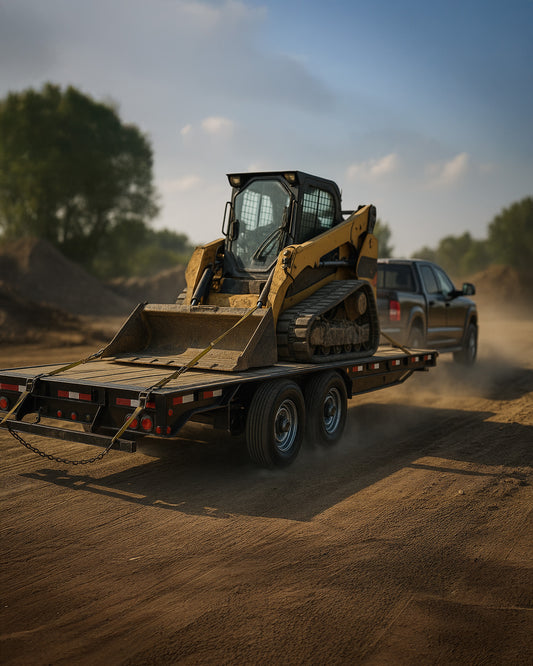

Maintaining the right tire pressure is crucial for the safety and efficiency of any vehicle, especially when it comes to trailers. Understanding the importance of tire pressure monitoring can significantly enhance your overall driving experience. One of the primary benefits of monitoring tire pressure is the increased safety it provides. Under-inflated tires can lead to poor handling, longer stopping distances, and a higher risk of blowouts, potentially resulting in catastrophic accidents.
Moreover, properly inflated tires contribute to better fuel efficiency. When tires are at their optimal pressure, they create less rolling resistance, which means your vehicle doesn't have to work as hard to move. This can lead to noticeable savings on fuel costs, making it not only a safety measure but also a cost-effective one.
Additionally, regular monitoring extends the longevity of your tires. Over time, both under-inflation and over-inflation can cause uneven wear, leading to premature tire replacement. By keeping a close eye on tire pressure, you can ensure your tires wear evenly, maximizing their lifespan and reducing maintenance costs.
With advanced technology from TrailerWatchdog, you can easily monitor tire pressure along with axle temperature. Tow with peace of mind, knowing that trailerwatchdog is standing guard.
Enhancing Vehicle Safety with Proper Tire Pressure

Proper tire pressure is a critical component of vehicle safety that often goes overlooked. When tires are inflated to the correct pressure, they maintain optimal contact with the road, enhancing traction and stability. This is particularly important in adverse weather conditions, such as rain or snow, where the risk of hydroplaning or loss of control increases significantly.
Furthermore, tires that are well-inflated contribute to effective braking performance. Under-inflated tires can lead to longer stopping distances, which could be the difference between avoiding an accident and a serious collision. Regularly monitoring tire pressure ensures that you are always aware of the condition of your tires, allowing for timely adjustments that keep your vehicle operating safely.
In addition to improving handling and braking, proper tire pressure also plays a role in reducing the likelihood of tire blowouts. A tire that is consistently under-inflated is more prone to overheating, which can lead to catastrophic failure while driving. By investing in a tire pressure monitoring system, you can receive real-time alerts about your tire pressure, enabling you to address issues before they escalate.
Ultimately, maintaining the right tire pressure not only protects the vehicle and its occupants but also contributes to safer roads for everyone. Being proactive about tire health is a simple yet effective step toward enhancing overall vehicle safety.
Improving Fuel Efficiency Through Tire Pressure Management
One of the most significant yet often underestimated benefits of monitoring tire pressure is its direct impact on fuel efficiency. When tires are inflated to the recommended pressure, they reduce rolling resistance, allowing the vehicle to travel more smoothly and requiring less energy to maintain speed. This results in lower fuel consumption and can lead to substantial savings over time.
According to studies, driving on under-inflated tires can decrease fuel efficiency by up to 3% for every 1 PSI drop in tire pressure. This means that a vehicle with tires consistently under-inflated by just a few PSI could be wasting gallons of fuel each month. For fleet operators and long-distance travelers, the cumulative effect of this fuel waste can be significant.
Moreover, maintaining proper tire pressure can also extend the life of the tires themselves. When tires are not properly inflated, they wear unevenly, leading to premature replacements and additional costs. By ensuring that tires are well-maintained, not only can you enhance fuel efficiency, but you can also reduce maintenance expenses over time.
Incorporating a tire pressure monitoring system can simplify this process, providing real-time information about tire conditions. This proactive approach to tire management empowers drivers to make informed decisions, ultimately improving fuel efficiency and contributing to a more sustainable driving experience.
Protect your trailer
Extending Tire Lifespan with Regular Monitoring

Regular monitoring of tire pressure is essential not only for safety and efficiency but also for extending the lifespan of your tires. Tires are a significant investment for any vehicle owner, and their longevity can be influenced by various factors, including inflation levels, alignment, and overall maintenance.
When tires are consistently maintained at the correct pressure, they experience less wear and tear. This is primarily because properly inflated tires ensure even contact with the road surface, leading to reduced friction and heat buildup. In contrast, under-inflated tires can cause uneven wear patterns, resulting in the need for premature replacements.
Furthermore, over-inflated tires can also be detrimental, as they lead to a stiffer ride and increased susceptibility to damage from potholes and road debris. Regular monitoring helps to strike the right balance, ensuring that tires remain within the optimal pressure range.
Utilizing a tire pressure monitoring system allows drivers to receive real-time updates and alerts regarding tire conditions. This technology not only helps in maintaining the correct pressure but also promotes timely interventions if any anomalies are detected. By adopting a proactive approach to tire maintenance, vehicle owners can significantly enhance tire longevity, ultimately saving money on replacements and ensuring safer travels.
Reducing Risk of Tire Blowouts and Accidents

One of the most critical benefits of monitoring tire pressure is the significant reduction in the risk of tire blowouts and accidents. Tires are the only contact point between your vehicle and the road, and maintaining their optimum pressure is vital for safe driving.
Under-inflation is a leading cause of tire blowouts. When a tire is not inflated to its recommended pressure, it can overheat due to increased flexing, leading to structural failure. This can result in sudden blowouts, which pose serious risks not only to the driver but also to other road users. According to the National Highway Traffic Safety Administration (NHTSA), under-inflated tires are responsible for thousands of accidents each year.
By implementing a tire monitoring system, drivers can receive alerts about tire pressure changes in real-time. This proactive measure allows for immediate adjustments, reducing the likelihood of dangerous blowouts. Moreover, monitoring tire conditions enhances overall vehicle handling and stability, especially during sudden maneuvers or adverse weather conditions.
Additionally, maintaining proper tire pressure contributes to better fuel efficiency. Under-inflated tires can decrease fuel economy, leading to higher costs and increased emissions. By keeping tires in optimal condition, drivers not only enhance safety but also contribute to a more environmentally friendly driving experience.
How to Implement Tire Pressure Monitoring Systems

Implementing a tire pressure monitoring system (TPMS) is a straightforward process that can significantly enhance the safety and efficiency of your trailer. To begin, choose a reliable TPMS that suits your trailer type and size. Look for systems that offer real-time monitoring, easy installation, and compatibility with your existing trailer setup.
Once you have selected a TPMS, follow these steps for effective implementation:
- Installation: Most modern TPMS devices come with user-friendly instructions. Typically, you will need to install sensors on each tire’s valve stem. Ensure that the sensors are securely attached and properly calibrated to provide accurate readings.
- Configuration: After installation, configure the system according to the manufacturer’s guidelines. This often involves setting the recommended tire pressure for your specific trailer.
- Regular Maintenance: Regularly check that the sensors are functioning correctly and that the battery life is sufficient. Some systems may require periodic recalibration or updates.
- Monitor Alerts: Familiarize yourself with the alert system of your TPMS. Understanding what different alerts mean can help you take immediate action if tire pressure drops below safe levels.
By following these steps, you can ensure that your trailer is equipped with a reliable tire pressure monitoring system, significantly reducing the risk of tire-related incidents. Tow with peace of mind, knowing that trailerwatchdog is standing guard.




